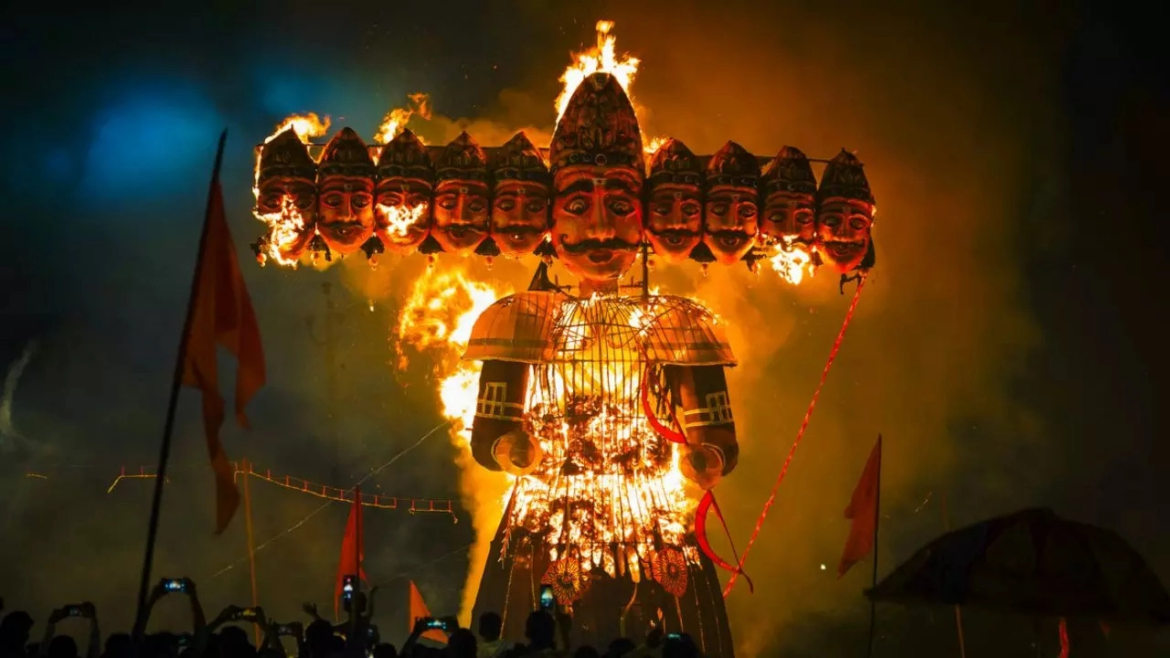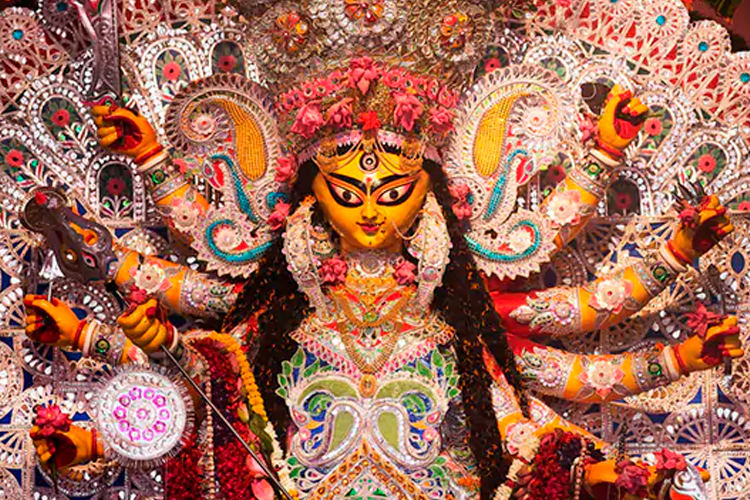By Parika Singh
As the epic tale of Ramcharitmanas drew to its culminating verses, Lord Ram won the battle with Ravan and rescued his kidnapped wife from the Lankan King. This day then symbolically became the victory of good over evil. Symbolically.
Unfortunately, Dussehra is no longer a day to reflect on the good or evil in our society or the good or evil within our minds and hearts. Somehow, it has been reduced to an overt competition to erect the tallest effigy—a feat allegedly claimed by Delhi this year.
Growing up, the day after Durga Pooja filled every little kid with excitement and anticipation for the Dussehra holiday. Even though it meant no school and a range of delicacies, I eagerly waited for the evening after the Shastra Pooja when my father would take us to the Dussehra Maidan nearby where half the city would accumulate to witness a spectacle. A great vantage point was everything and he would try to park the car at a place with a direct view and lift us to the top of the car so that we could see all the lights and colours of the effigy.
I remember being enthralled by the air of festivity and celebration, as the ground would be filled with bicycle vendors selling balloons, toys, and small figurines of Ram, Sita, and Ravan. As soon as the effigy would be lit, my dad would distribute leaves of Sona Patti or Apta so that we could exchange them and wish anyone we met along the way. Small effigies made out of mud would garland many houses and people in our colony would visit each other’s homes to foster a sense of community and togetherness to conclude the day. I wish I could hold on to those moments of childhood wonder and festivity all these years later.
Today the Dussehra Maidan in Indore has erected a mammoth effigy, 111 ft in height. The cleanest city in the country, which recently witnessed the brutal assault of two army officers and the gangrape of their female friend. Haryana outshone it by constructing a 125 ft Ravan to celebrate the arrival of harvest season in agriculture, as lakhs of farmers still protest against crop prices. In the end, though, Delhi won the effigy battle with a 211 ft one in Dwarka.
While Dussehra also symbolizes the victory of Goddess Durga over Mahishasur, Delhi continues to grapple with crimes against women, and its Chief Minister Atishi Marlena was evicted from her residence.
Although the limelight on this effigy is beneficial to showcase the talent of local artists, somewhere between the small mud effigies outside houses to this 211 ft exhibition in the capital city, it is time to question whether burning them eclipsed the true significance of this day. Will good truly triumph over evil tonight?
Prime Minister Narendra Modi has been invited to the event and whether he accepts or not, over two feet tall structure of Ravan will be lit on fire tonight as 75 men, women, and elders from Ladakh are on their 7th day of hunger strike in Ladakh Bhavan, seeking their right of self-governance and cautioning our country against the disastrous effects of climate change.
The very same Ravan, who is worshipped in several parts of India including Kanpur and Bisrakh in Uttar Pradesh, Mandsaur in Madhya Pradesh, Jodhpur in Rajasthan, Gadchiroli in Maharashtra, etc. In fact, our rich culture and heritage are diverse enough to thrive alongside several tribal communities such as Santhal, Asur, Korku, and Turuva which are devoted followers of Mahishasur and dedicated preservers of their indigenous land and environment.
Perhaps then this day stands for something bigger than the mere deaths of Ravan or Mahishasur. Perhaps communities coming together regardless of their religion or caste or region is far more fundamental to the spirit of Dussehra.
Each time we protect the environment that sustains us, support the causes that uplift us, extend kindness and compassion to those who need us, and reflect upon our faults, misgivings, and biases, we truly bring Ram and Ravan, Devi and Asur, Farmer and Industrialist, Politician and Voter- together as Indians, who chose good, who triumphed evil and now deserve to exchange gold leaves and commemorate the essence of Dussehra.
And nothing could articulate this with more beauty and panache than this verse by lyricist Javed Akhtar,
“Ram Hi To Karuna Mein Hai, Shanti Mein Ram Hain
Ram Hi Hai Ekta Mein, Pragati Mein Ram Hain
Ram Bas Bhakton Nahin, Shatru Ke Bhi Chintan Mein Hain
Dekh Taj Ke Paap Raavan, Ram Tere Man Mein Hain
Ram Tere Man Mein Hain, Ram Mere Man Mein Hain
Ram To Ghar Ghar Mein Hain, Ram Har Aangan Mein Hain
Man Se Rawan Jo Nikale, Ram Usake Man Mein Hain…”
(Ram is in compassion, Ram is in peace
Ram is in unity, Ram is in progress
Not just a devotee, Ram is in the thoughts of enemies too
Sacrifice your sins Ravan and see, Ram is in your heart
Ram is in your heart, Ram is in my heart
Ram is in every home, Ram is in every courtyard
Whoever removes Ravana from within, Ram is in their heart)
With these words, I wish you a very happy and thoughtful Dussehra.




